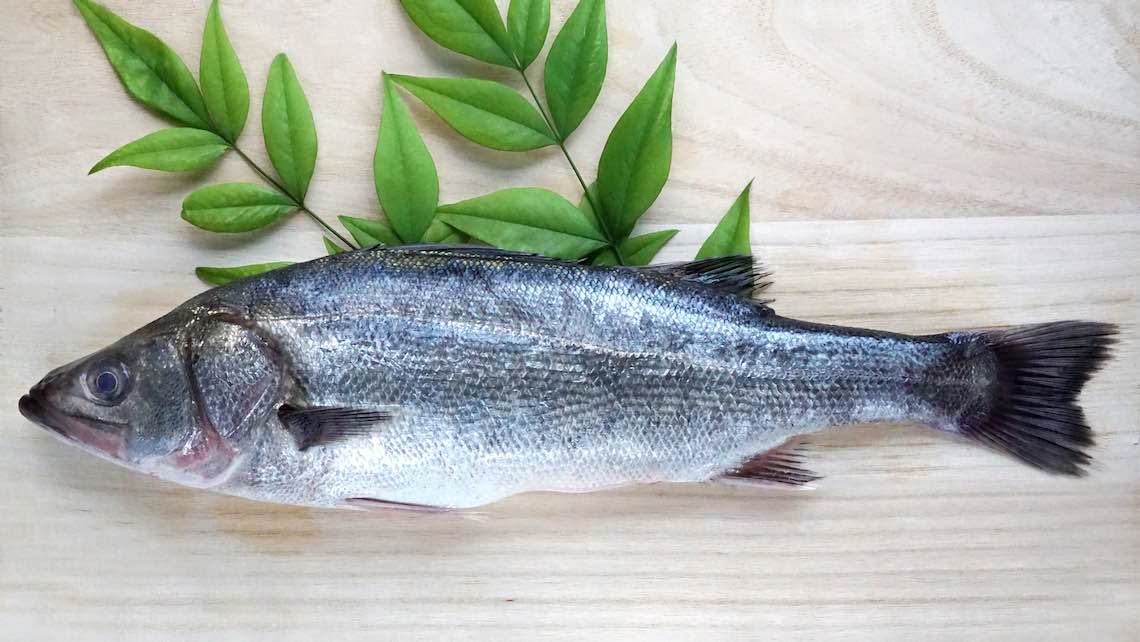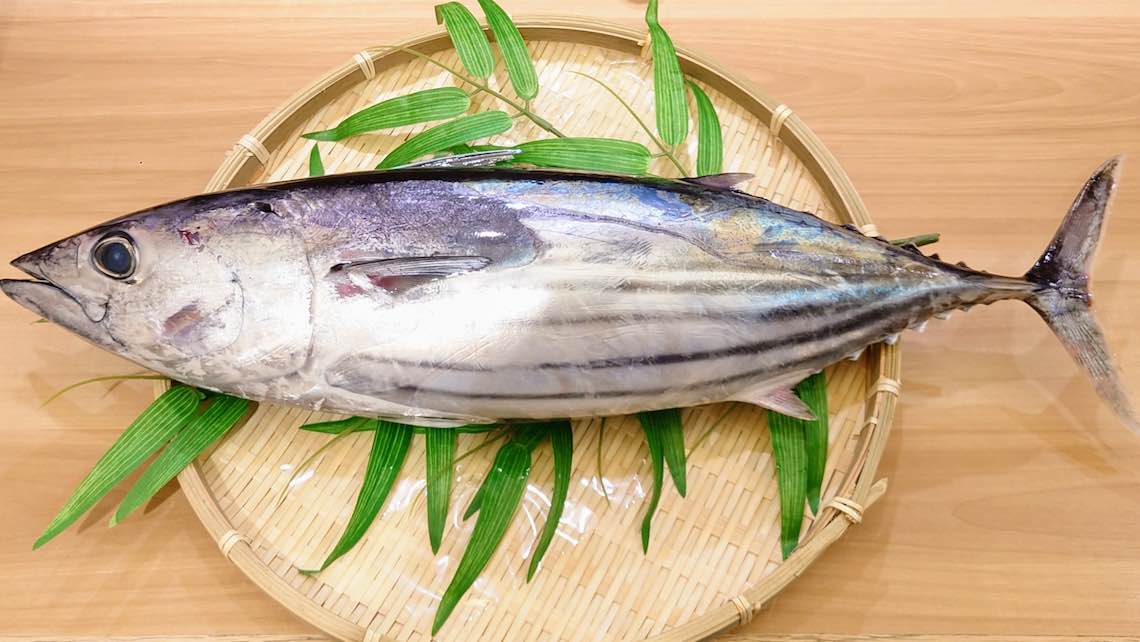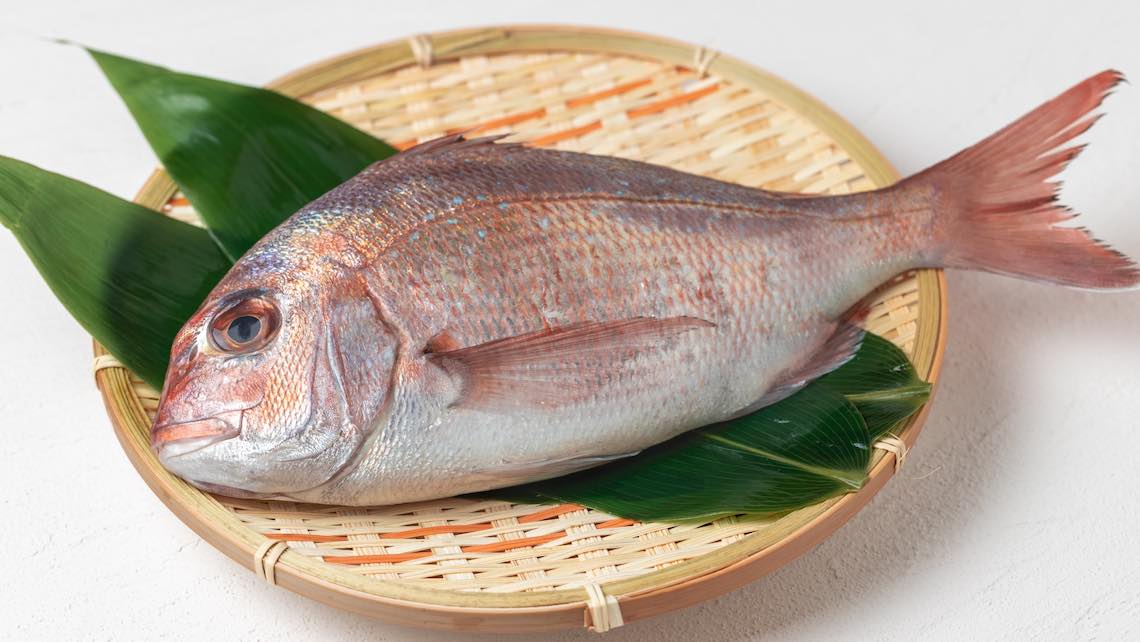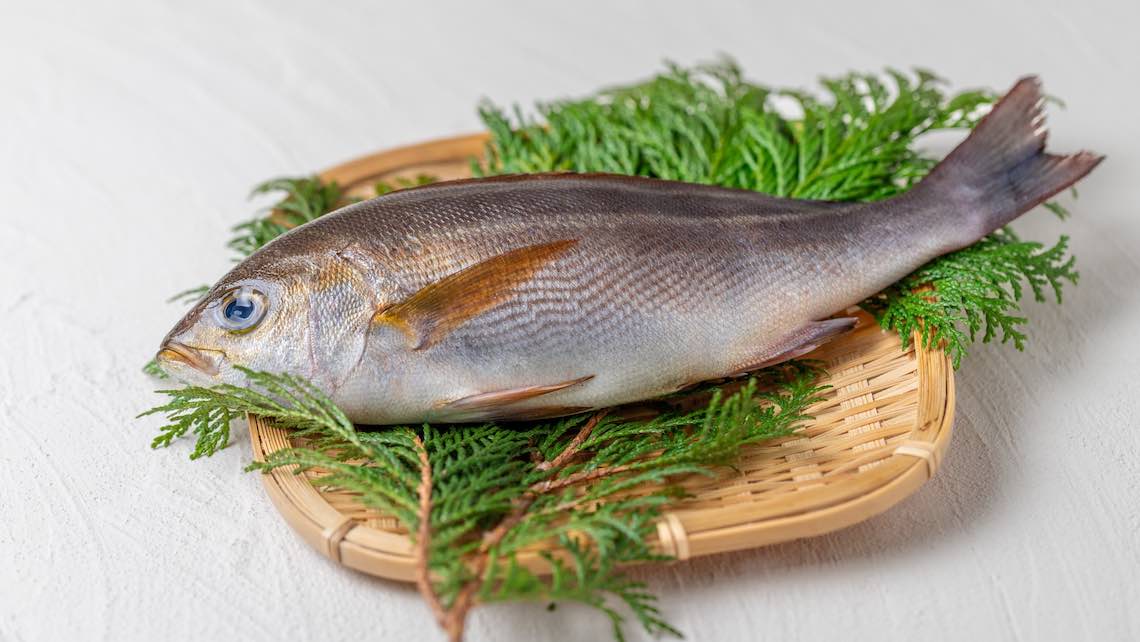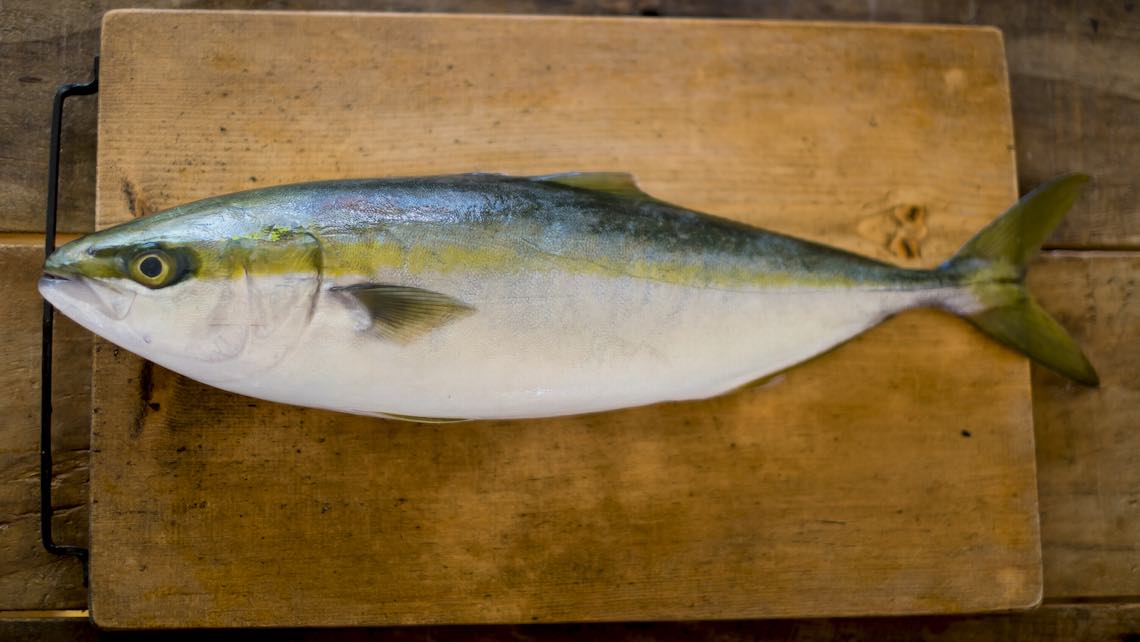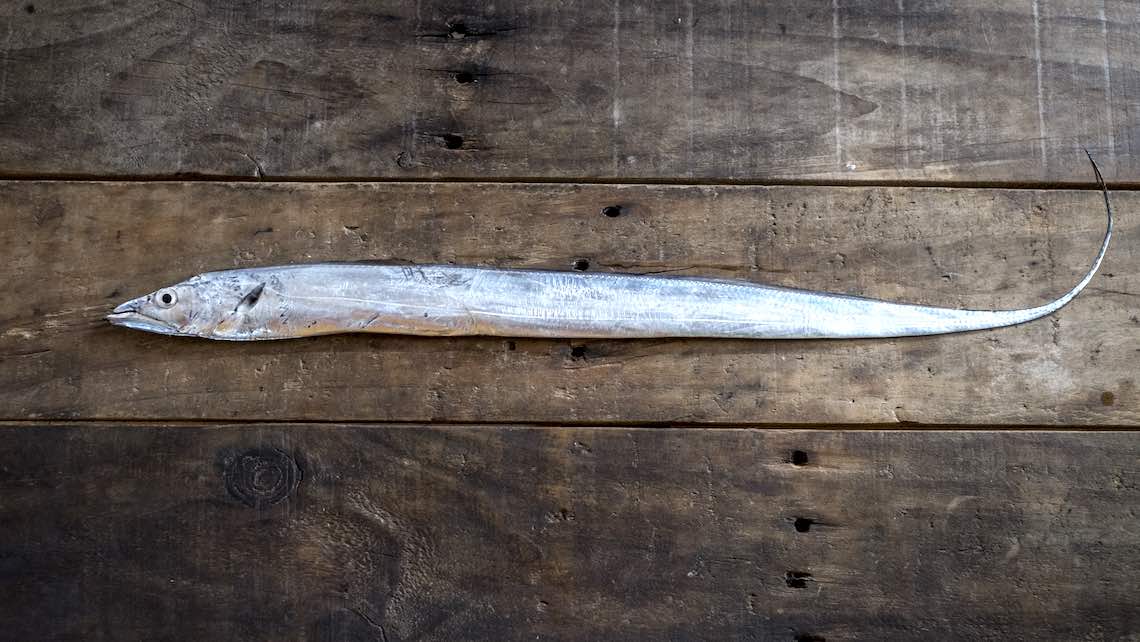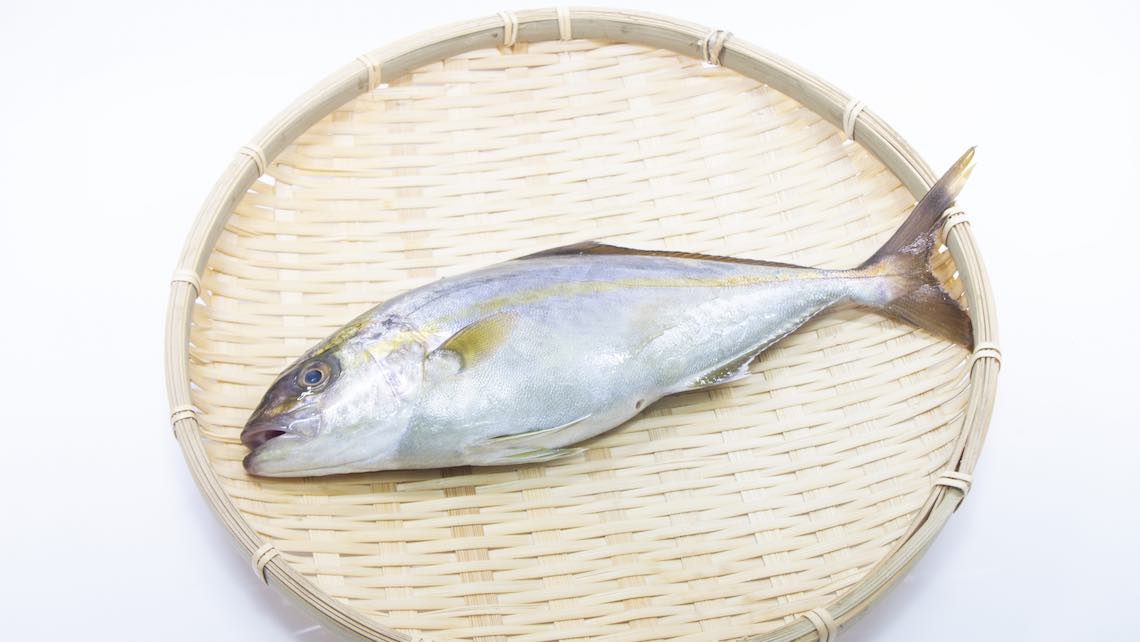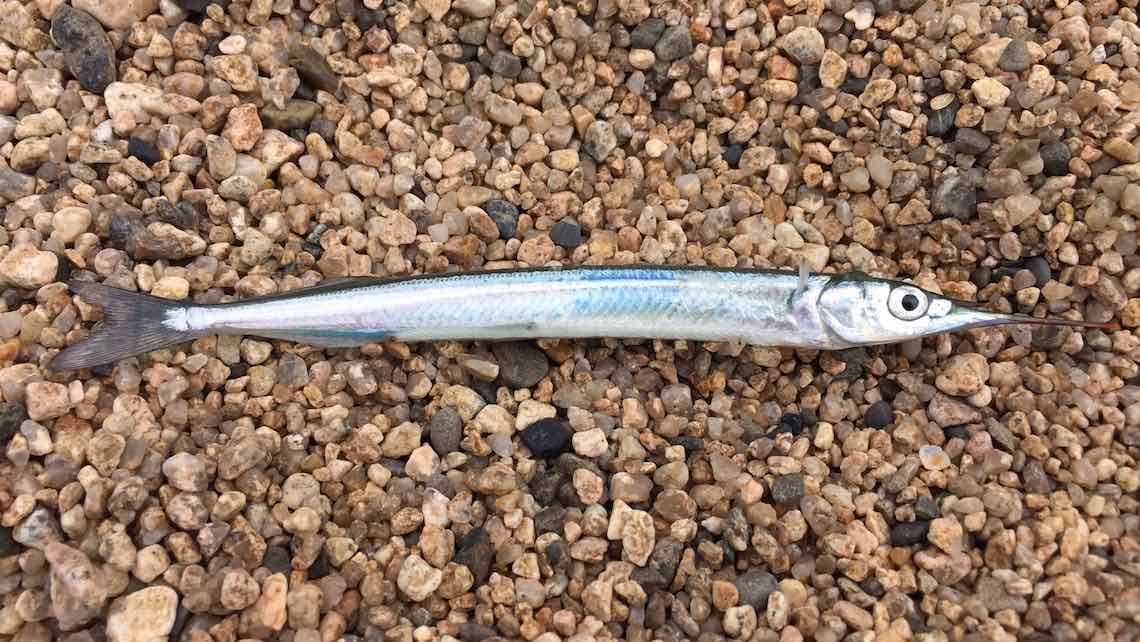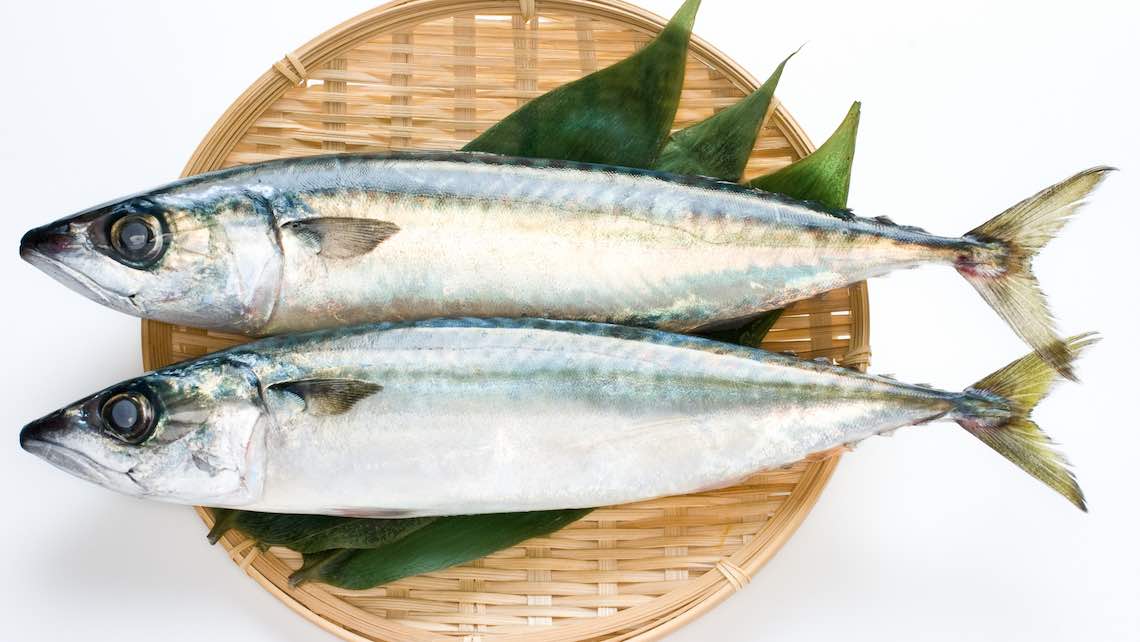Tuna [Maguro]
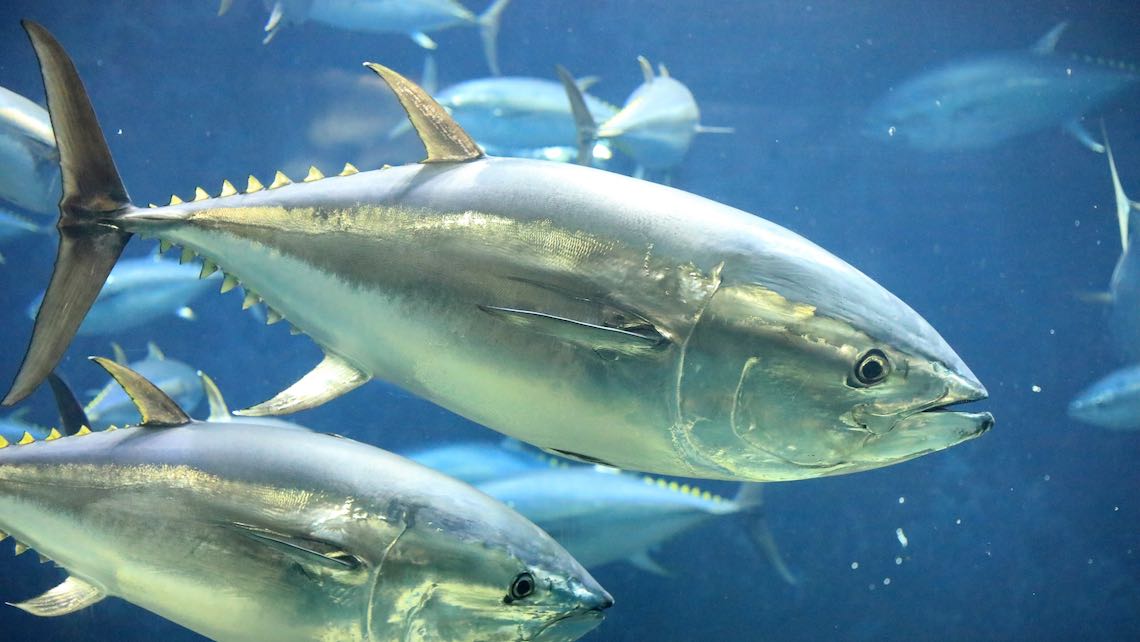
Japanese Name and Pronunciation:

[maguro]
Tuna, a staple in Japanese cuisine, holds a special place for its versatility and delectable flavors. Here is an explanation of tuna from the perspective of Japanese cuisine:
Tuna, known as “maguro” in Japanese, is highly prized for its rich taste, firm texture, and vibrant color. It is predominantly sourced from the seas surrounding Japan, as well as other oceans worldwide. The different cuts of tuna are used in various traditional Japanese dishes, including sushi, sashimi, and grilled preparations.
Tuna plays a central role in Japanese culinary traditions, captivating food lovers with its exquisite taste and enticing textures.
Different Cuts of Tuna
Akami
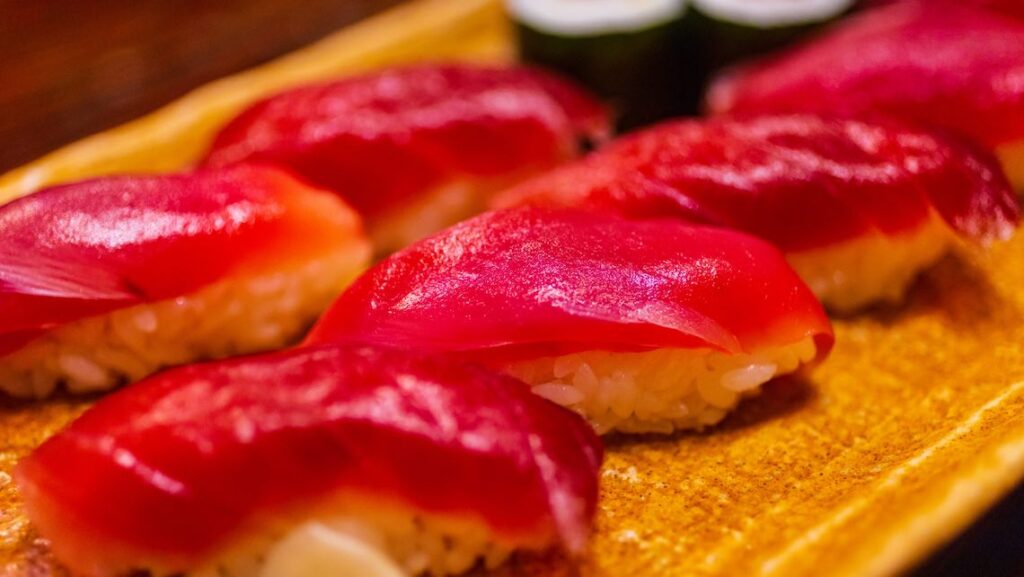
This refers to the lean, red flesh of the tuna, often taken from the back and sides of the fish. It has a clean, meaty flavor and firm texture, making it a popular choice for sushi and sashimi. It is the most highly regarded cut of tuna in Japanese cuisine.
![Lean Tuna Sushi [Akami]](https://itadakimasu-japan.com/wp-content/uploads/2023/07/akami2-320x180.jpg)
Chutoro

Chutoro is the medium fatty tuna belly, located between the lean akami and the fattier otoro. It has a higher fat content than akami, resulting in a buttery texture and a rich, melt-in-your-mouth flavor.
![Medium Fatty Tuna Sushi [Chutoro]](https://itadakimasu-japan.com/wp-content/uploads/2023/07/chutoro-320x180.jpg)
Otoro
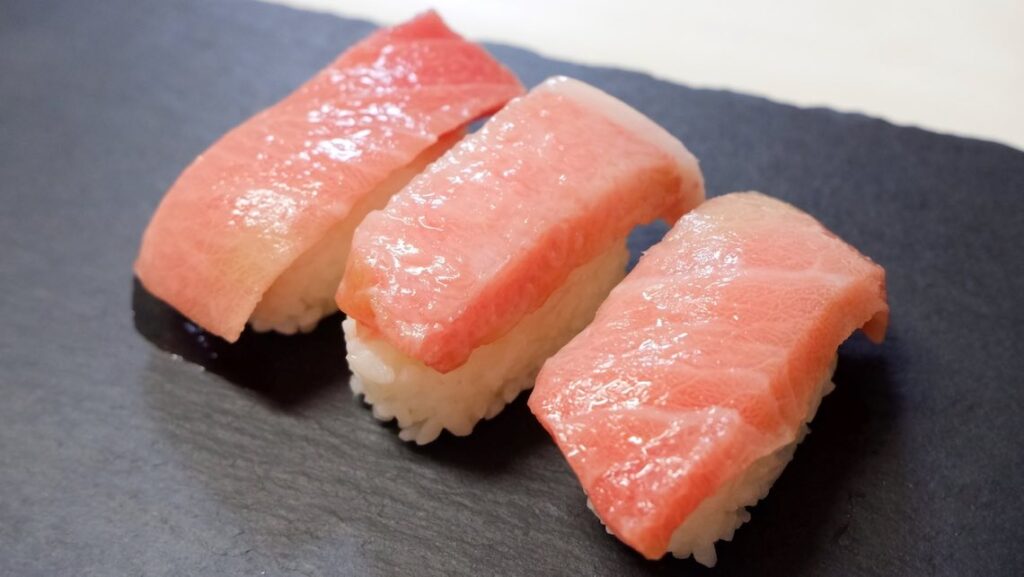
Otoro is the fattiest and most prized part of the tuna, located in the belly area. It is highly marbled with fat, giving it an incredibly rich, luxurious flavor and a melt-in-your-mouth texture.
These are some of the key cuts of tuna commonly found in Japanese cuisine, each offering a unique flavor, texture, and culinary experience.
![Fatty Tuna Sushi [Otoro]](https://itadakimasu-japan.com/wp-content/uploads/2023/07/otoro-320x180.jpg)
Nakaochi
When cutting up a whole tuna, there is a small portion of lean meat that remains around the backbone, referred to as “nakaochi.” Nakaochi is the term used for the meat scraped off from the bones using a spoon. It is a highly coveted and rare part as only a small amount can be obtained from each tuna.
Nakaochi is treasured for its distinct qualities and flavors. The meat is leaner compared to other cuts and offers a firm yet tender texture. It possesses a deep, savory taste that is characteristic of tuna. This flavorful and succulent nakaochi meat finds its way into various dishes, including sushi, sashimi, and other seafood preparations.
![Fatty Tuna with Green Onion Sushi [Negitoro Gunkan-maki]](https://itadakimasu-japan.com/wp-content/uploads/2023/07/negitoro_gunkan-320x180.jpg)
Types of Tuna in Japan
In Japan, five main types of tuna are commonly caught, each with its own distinctive characteristics. Here is a description of each:
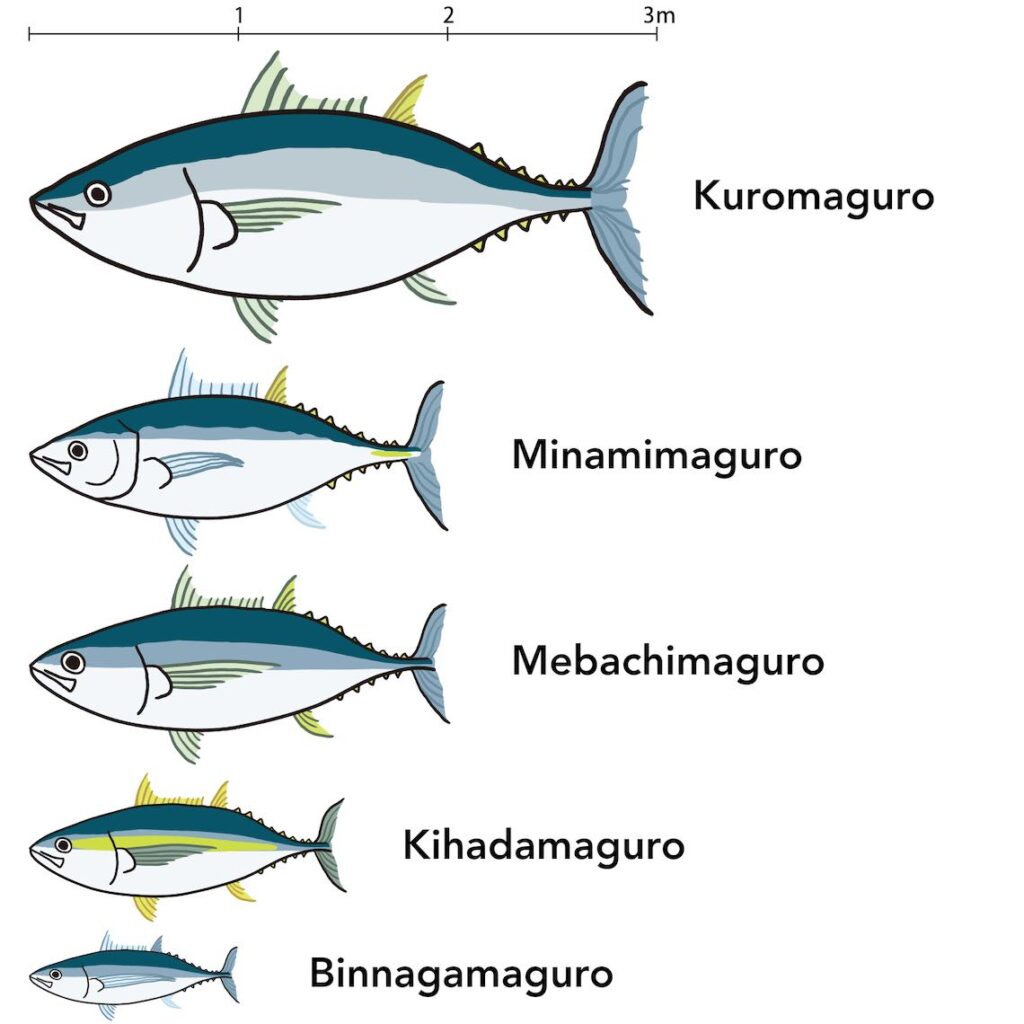
Bluefin Tuna (Kuromaguro or Honmaguro)
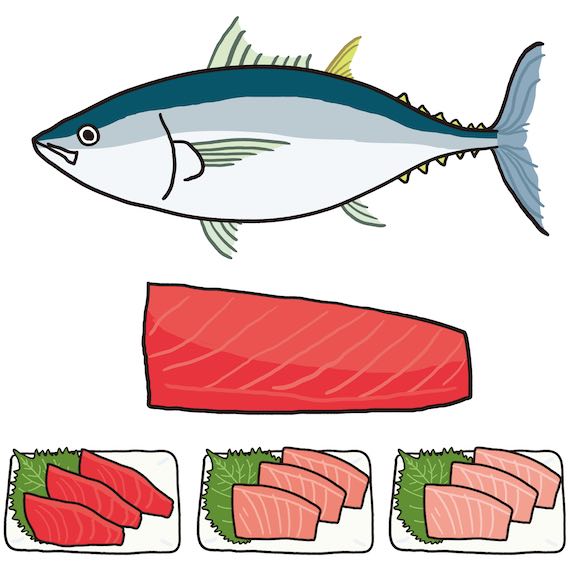
Bluefin Tuna, also known as “Kuromaguro” or “Honmaguro,” is the most popular and highly regarded species in the world of tuna. It is harvested in the North Pacific and Atlantic Oceans, including the waters around Japan. Its distinct features include a dark, shimmering body and a size that can reach nearly 3 meters in length.
The peak season for Bluefin Tuna is during winter when it exhibits vibrant, red flesh and intense umami flavor. It is primarily enjoyed as sashimi or sushi. The prized delicacy of Bluefin Tuna is its fatty belly portion called “toro,” known for its smooth texture and melt-in-your-mouth fat. Interestingly, only Bluefin Tuna and Southern Bluefin Tuna yield the Otoro cuts.
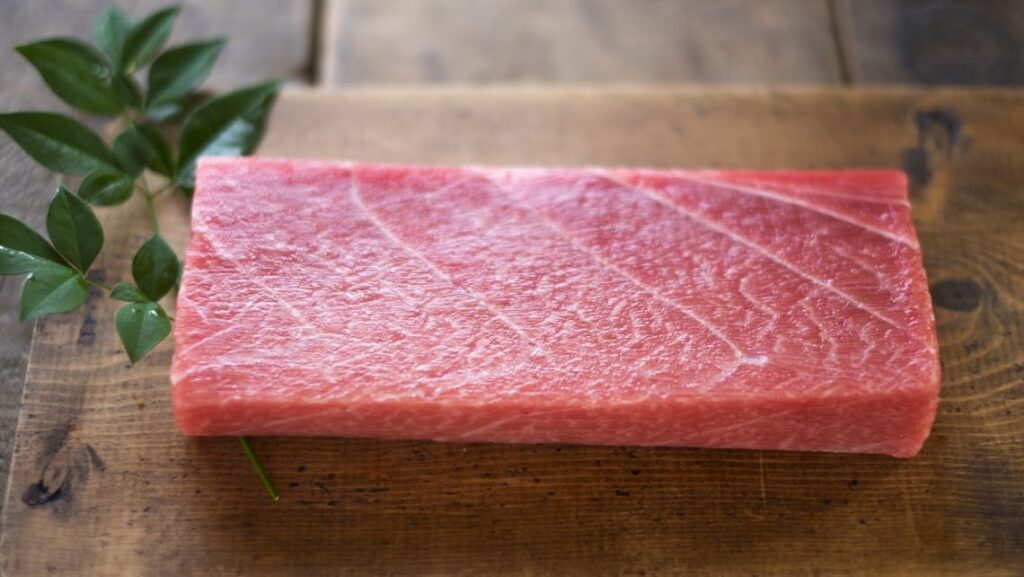
Traditionally, it has been predominantly sourced from wild populations, but thanks to extensive research conducted by Kindai University, complete aquaculture of Kuromaguro has now become a reality.
Complete aquaculture, also known as closed-cycle aquaculture, is a method of cultivation where artificially spawned juvenile fish become the parent fish that lay eggs, which are then used for subsequent artificial spawning. This process creates a self-sustaining cycle of reproduction in aquaculture. Through their years of research, Kindai University has developed advanced techniques for maintaining water quality, formulating nutritious feed, managing reproduction, and addressing diseases, enabling the sustainable production of Kuromaguro.
The achievement of complete aquaculture has several notable advantages, especially from a sustainability standpoint. With declining wild populations of Bluefin Tuna, it has become crucial to mitigate overfishing and preserve the species. Complete aquaculture provides a solution by allowing the production of Kuromaguro to meet demand without further depleting wild stocks.
Southern Bluefin Tuna (Minamimaguro)
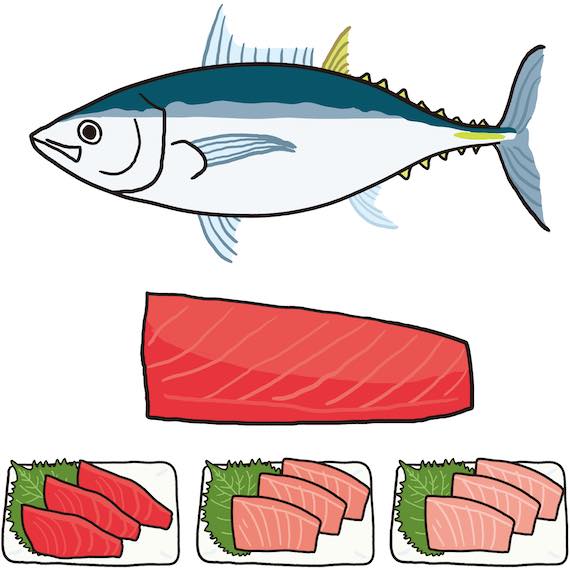
Southern Bluefin Tuna, also known as “Minamimaguro” is a species of tuna found in the waters of the South Atlantic Ocean. In Japan, it is often referred to as Indomaguro. Minamimaguro belongs to the same category of medium-sized species as Mebachimaguro and Kihadamaguro, with a maximum size of around 2.5 meters. It is renowned as a high-quality fish, second only to Kuromaguro (Bluefin Tuna), and is also known for producing the Otoro cuts.
Minamimaguro is characterized by its tender, flavorful fat and rich, deep-red flesh with a delightful sweetness. It is commonly enjoyed as sashimi or sushi. The peak season for Minamimaguro is in summer, but due to the increasing popularity of aquaculture, delicious Minamimaguro can now be enjoyed year-round.
Bigeye Tuna (Mebachimaguro or Batchimaguro)
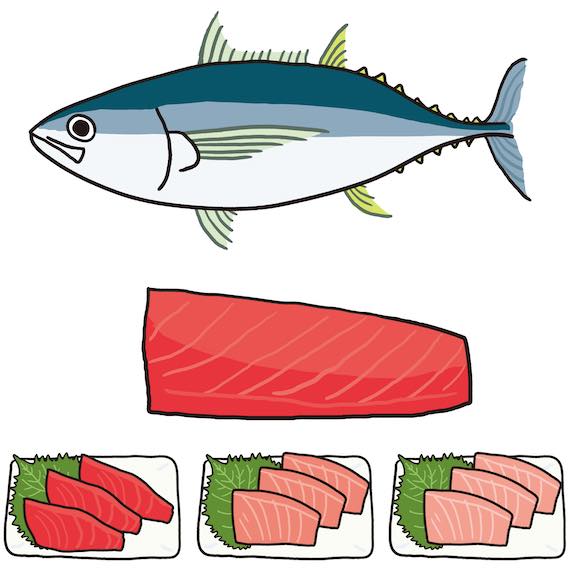
Bigeye Tuna, also known as “Mebachimaguro” or “Batchimaguro,” is a medium-sized species of tuna, reaching a maximum size of about 2.5 meters. It is found in warm waters worldwide, and the ones caught in the waters near Japan tend to be slightly smaller in size. Mebachimaguro is characterized by its vibrant pink color and refreshing flavor. Its peak season is from November to February.
Unlike Kuromaguro (Bluefin Tuna) and Minamimaguro (Southern Bluefin Tuna), Mebachimaguro has less fatty toro (belly) meat, and even the small amount of toro it has a slightly sinewy texture. Due to its abundant supply, it is sold at a more affordable price compared to other tuna species. It is commonly used for sushi, sashimi, and even as steak, highlighting its flavorful red meat.
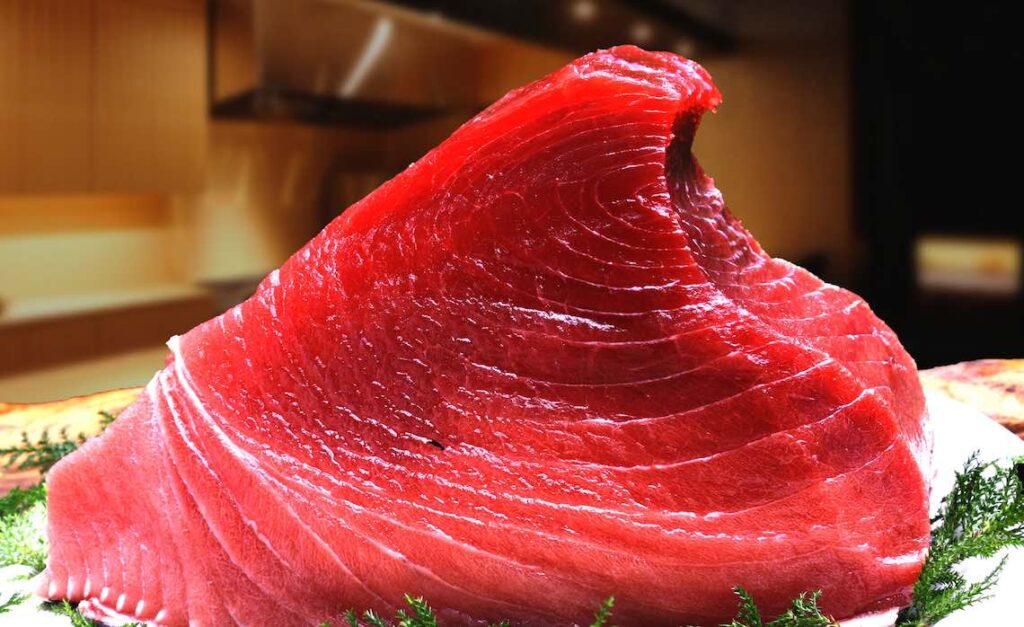
Mebachimaguro offers a delicious and cost-effective option for those who enjoy lean tuna and its versatile culinary applications.
Yellowfin Tuna (Kihadamaguro)
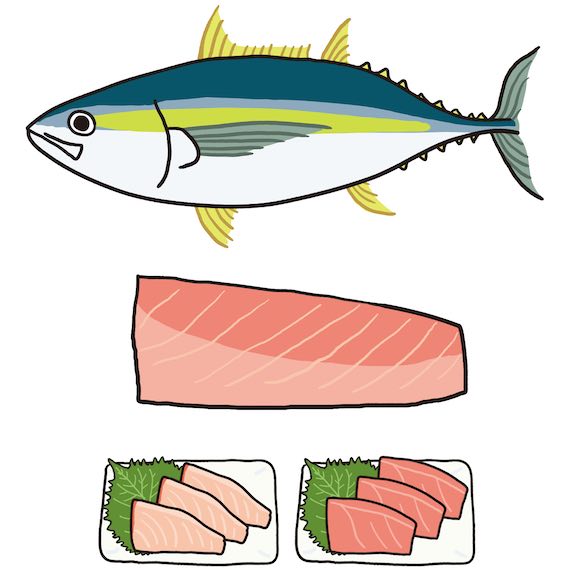
Yellowfin Tuna, also known as “Kihadamaguro,” is characterized by its overall yellowish hue. It is a medium-sized species, similar to Minamimaguro and Mebachimaguro, but the ones caught in the waters near Japan tend to be smaller, reaching a maximum size of around 1.5 meters. Kihadamaguro is known for its light and mild-flavored red flesh, which is even paler in color compared to Mebachimaguro. It has a slightly firmer texture.
Due to its firm texture, Kihadamaguro holds its shape well when prepared as sashimi, making it a popular choice for sushi and sashimi. As it is a lean species with less fat content, there is minimal toro available, and it is often used as an ingredient in canned tuna.
Albacore Tuna (Binnagamaguro or Binchoumaguro)

Albacore Tuna, also known as “Binnagamaguro” or “Binchoumaguro,” is a smaller species within the tuna family. It primarily inhabits tropical and temperate waters worldwide and reaches a length of about 50 cm. In Japan, it is only caught in a small area off the coast of Hokkaido. is characterized by its soft texture and white or pink flesh. Its overall pale coloration often leads to its resemblance to toro, earning it the name “Bintoro” in conveyor belt sushi establishments. However, it is not actually toro.
Binchoumaguro is in season during winter when it accumulates more fat, making it more popular. It is highly regarded as an affordable option for tuna, commonly found in supermarkets and conveyor belt sushi restaurants. It is also frequently used as a key ingredient in canned tuna products.

